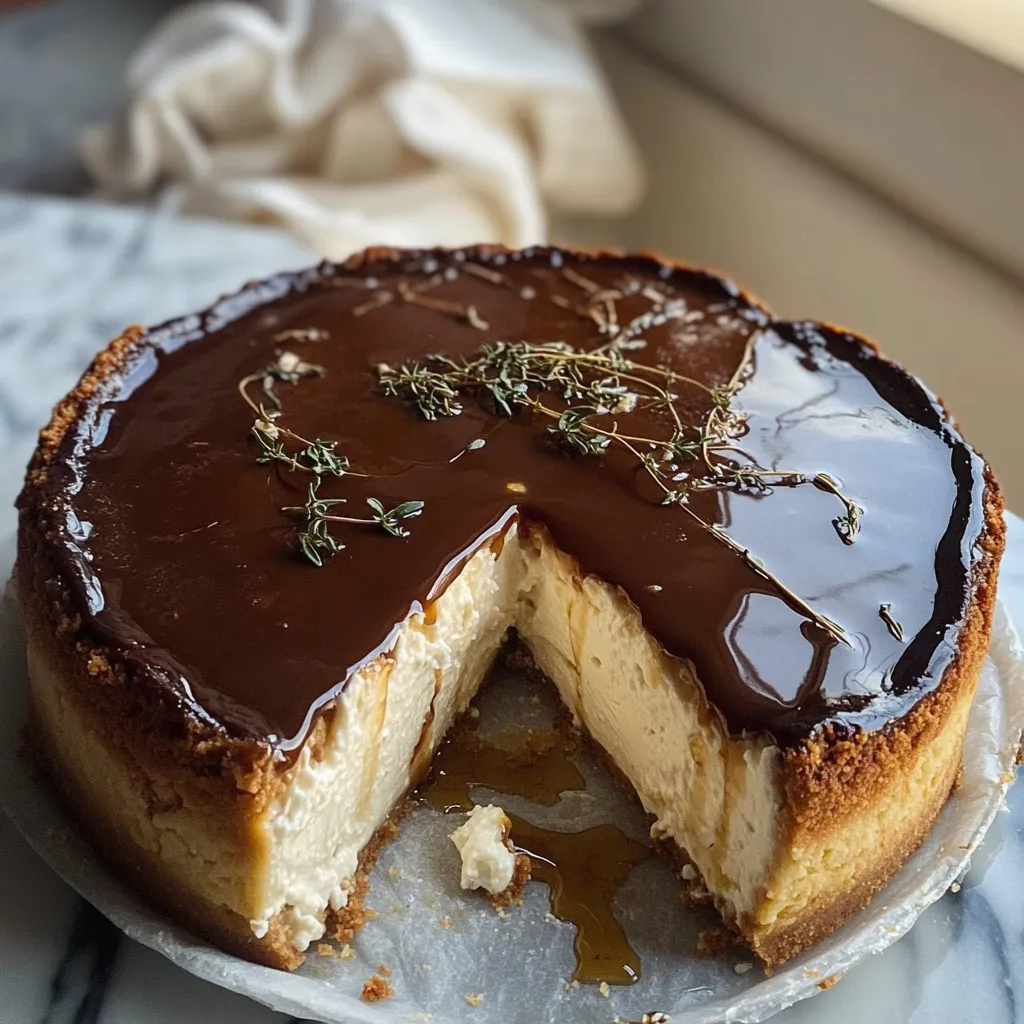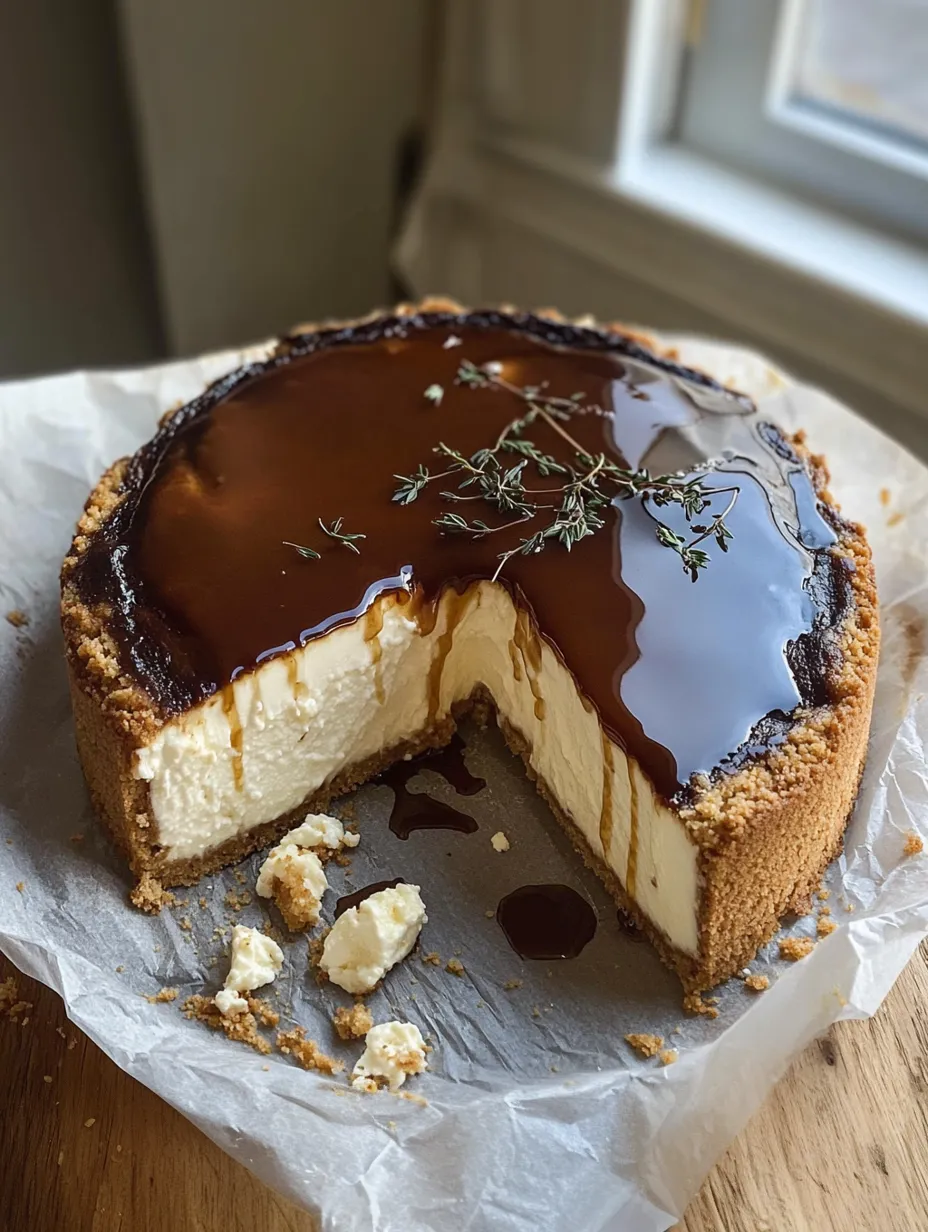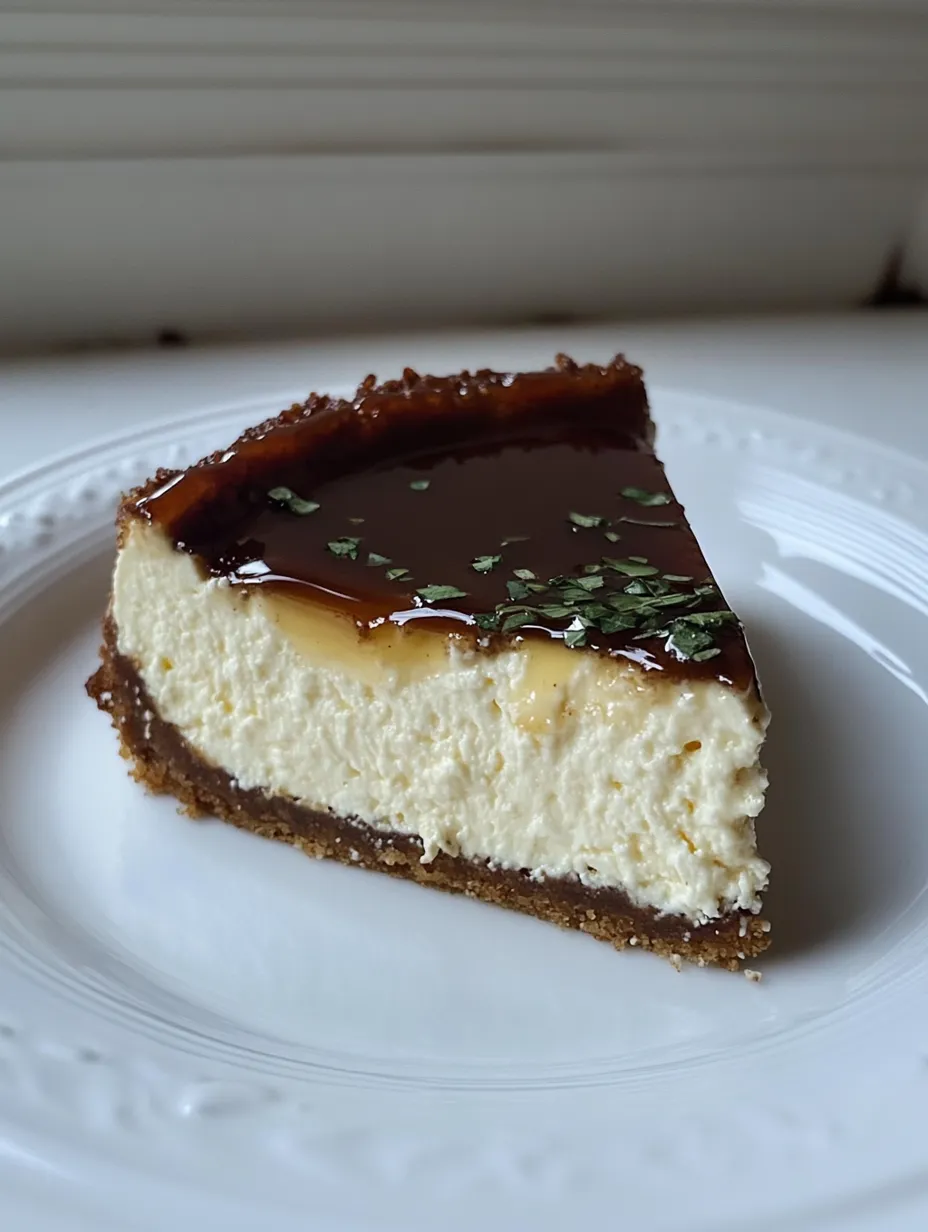 Pin it
Pin it
This savory feta cheesecake came to life one afternoon when I was planning a Mediterranean-themed dinner party but couldn't decide between serving a cheese board or dessert. The lightbulb moment hit me: why not create a savory cheesecake that could work as both? The combination of tangy feta with creamy cream cheese, brightened with lemon and herbs, creates this incredible flavor that walks the line between savory and sweet. It's become my signature dish for brunches and the appetizer everyone requests when I'm hosting!
My neighbor Diane, who typically avoids cheesecake because it's "too sweet," actually asked for the recipe after trying this at our block party! My father-in-law, who's notoriously picky about anything that sounds "fancy," had three slices at our last family gathering. There's something about that savory-sweet combination that appeals to almost everyone, even those who think they won't like it.
Simple Ingredients
- Feta cheese: This is obviously the star of the show! I prefer using a block of feta packed in brine rather than pre-crumbled, as it has better moisture and flavor. Greek feta gives the sharpest, tangiest flavor, but French feta works beautifully too if you want something milder.
- Cream cheese: Provides that classic creamy cheesecake base that balances the sharper feta. I always use full-fat Philadelphia brand at room temperature for the smoothest texture. I tried using light cream cheese once, and the texture was disappointingly grainy.
- Fresh thyme: Adds that wonderful herbal note that complements the cheeses perfectly. I've experimented with different herbs, but thyme just works magic with feta. In summer, I sometimes mix in a bit of fresh oregano too for variety.
- Honey: Creates that perfect sweet counterpoint to the savory, tangy filling. I use a light, floral honey in the batter and save the stronger, more robust honey for drizzling on top. The honey I drizzle on warm slices creates these amazing little rivulets that look as good as they taste.
- Lemon zest: Just a touch brightens all the flavors without making it taste "lemony." Don't skip this! I made it without once when I forgot to buy lemons, and it definitely lacked that special something.
 Pin it
Pin it
Step-by-Step Instructions
- Crust perfection
- Creating that ideal base starts with the right texture. I mix the graham crumbs with melted butter until it resembles wet sand and can hold together when pressed. For an extra layer of flavor, I sometimes add a tablespoon of finely chopped fresh thyme to the crust mixture. Press it firmly into the pan using the bottom of a measuring cup – this creates a nice, even layer without compacting it too much. The slight sweetness of the graham crackers creates a perfect foundation for the savory filling.
- Cheese preparation
- Achieving that smooth, creamy texture requires proper temperature and technique. Both cheeses need to be at room temperature – I leave them out for at least two hours before starting. I beat the cream cheese first until completely smooth, then add the feta gradually. Since feta doesn't completely smooth out (which is part of its charm), I process it in a food processor first if I want a silkier final texture. Some small lumps of feta are actually nice though, providing little bursts of salty tanginess throughout.
- Flavor balancing
- Getting that perfect sweet-savory balance takes some finesse. I start with just a bit of honey in the batter – enough to complement the cheese without making it truly sweet. Too much and it becomes confusing to the palate; too little and the sharpness of the feta can overwhelm. The lemon zest and thyme add brightness and depth that ties everything together. I taste the mixture before adding the eggs and adjust the seasonings as needed.
- Gentle baking
- Creating that perfect texture requires patient, low-temperature baking. The water bath is optional but helps prevent cracks and creates the creamiest texture. I wrap the bottom of my springform pan in foil and place it in a larger pan with about an inch of hot water. The cheesecake is done when the edges are set but the center still has a slight jiggle – it will continue to set as it cools. Overbaking makes it dry and grainy, while underbaking makes it too soft to slice neatly.
- Cooling discipline
- Achieving that perfect slice requires complete cooling and chilling. This is the hardest part! Let it cool completely at room temperature before refrigerating for at least 4 hours, preferably overnight. I've tried to rush this step for last-minute gatherings, and while it still tastes good, the texture and sliceability suffer significantly. Patience truly pays off here.
- Serving strategy
- Enjoying this cheesecake at its best means thinking about temperature and pairings. I take it out of the refrigerator about 30 minutes before serving so it's cool but not cold – the flavors come through much better at slightly below room temperature. For a beautiful presentation, I drizzle honey over the entire cake, then add a small bunch of fresh thyme sprigs and a few lemon zest curls in the center. When serving as an appetizer, I accompany it with crisp crackers or crostini; as a dessert, fresh berries or sliced figs are wonderful alongside.
My first version of this cheesecake used way too much feta, and while delicious, it was overwhelmingly salty. I've gradually adjusted the ratio of cream cheese to feta to find that perfect balance where you get the distinctive feta flavor without it dominating everything else. I've also experimented with different herbs – rosemary was too strong, basil didn't quite complement the cheese, but thyme was just right, especially with that hint of lemon.
Perfect Pairings
This versatile cheesecake works beautifully in so many settings. For brunches, I serve smaller slices alongside a fresh fruit platter. At dinner parties, it makes an elegant first course with a small arugula salad dressed simply with olive oil and lemon. For wine tastings, I pair it with a crisp Sauvignon Blanc or a light Pinot Noir. During the holidays, I add dried cranberries and pistachios on top for a festive touch. It's become my go-to contribution for potlucks since it's unique and can be made well ahead of time.
Creative Twists
This basic formula welcomes creative variations while maintaining that wonderful savory-sweet balance. For a Mediterranean version, try adding chopped olives and sun-dried tomatoes to the batter. During summer, a version with fresh corn kernels and basil instead of thyme is absolutely delicious. My Greek friend adds a pinch of dried oregano and tops it with roasted red peppers. And for an impressive dinner party starter, try making mini versions in a muffin tin – they look adorable and are perfect single-serving portions.
Fresh Keeping
This cheesecake keeps beautifully in the refrigerator for up to 5 days, though the crust gradually softens over time. I store it in the springform pan with the ring still on, covered tightly with plastic wrap. For the best presentation, I add the honey drizzle and herb garnish just before serving. Leftover slices can be wrapped individually in plastic wrap, and I've found they make an incredible breakfast with coffee the next morning (don't judge until you've tried it!).
 Pin it
Pin it
I created this feta cheesecake for a dinner party on a whim, but it's become one of my signature dishes. There's something about that unexpected combination of familiar cheesecake texture with the surprising tanginess of feta that makes people's eyes light up when they take their first bite. It's perfect for those occasions when you want something a little different that will get people talking. While it might sound unusual, even traditionalists are usually won over with the first forkful!
Frequently Asked Questions
- → Can I make this cheesecake ahead of time?
- Yes! This cheesecake actually benefits from being made 1-2 days ahead, allowing the flavors to develop. Add the honey drizzle and herb garnish just before serving.
- → What type of feta works best?
- Traditional Greek feta made from sheep's milk offers the most authentic flavor, but any feta will work. For a milder taste, rinse and pat dry the feta before using.
- → Can I substitute the graham cracker crust?
- Absolutely! Try a crust made from crushed butter crackers, breadcrumbs mixed with herbs, or even a phyllo dough base for a more Mediterranean twist.
- → What can I serve with this feta cheesecake?
- Serve with crostini, fresh fruit, roasted vegetables, or as part of a Mediterranean mezze platter. It pairs wonderfully with a crisp white wine or light rosé.
- → Is this served hot or cold?
- This cheesecake is traditionally served chilled, similar to a regular cheesecake. However, it can also be served at room temperature, which allows the flavors to be more pronounced.
